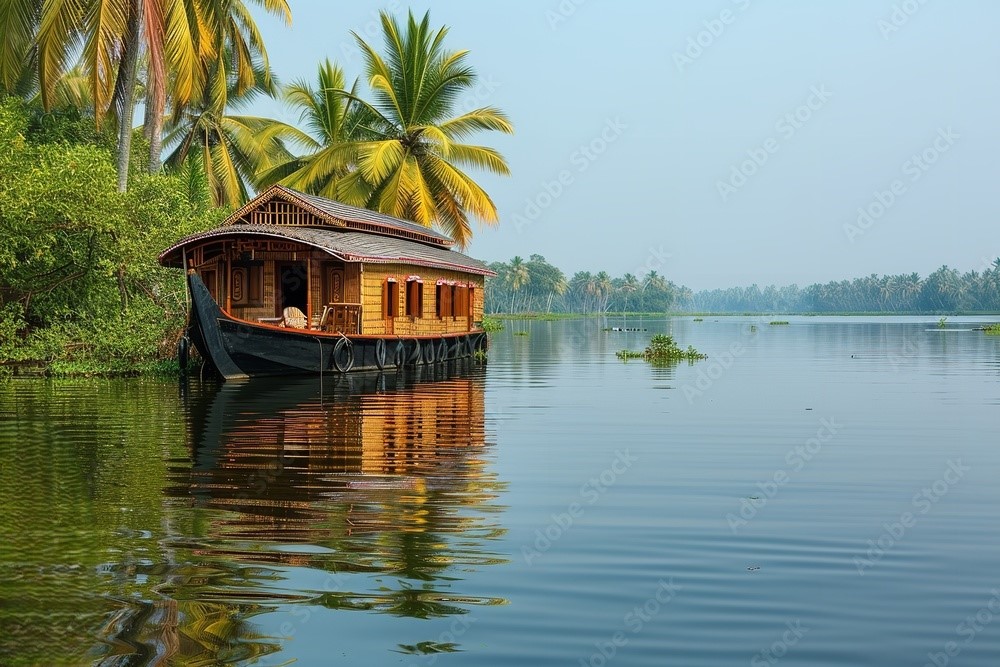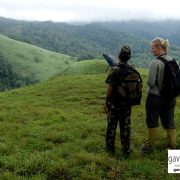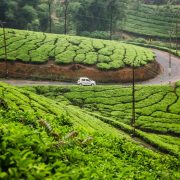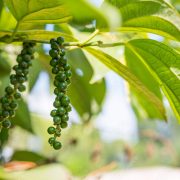
Kumarakom

Mangrove forests, paddy fields, coconut groves & enchanting waterways adorn the picturesque village of Kumarakom. This is an idyllic backwater destination where the fresh water of the Vembanad Lake criss-crosses the mainland forming a labyrinth of lagoons, brooks, canals and waterways. For an incredible journey cruise leisurely on a “Kettuvallom” (Traditional Houseboat). Where one can find a variety of marine life like pearl spotted fish, tiger prawns, crabs, prawns and much more
Places of Interest
Thazhathangady Juma Masjid: With construction occurring over a millennium ago, this mosque is considered to be one of the oldest in the country and is notable for its magnificent architecture as well as the beautiful carvings in wood which adorn its interior. The Masjid/ Mosque is in Kottayam is located very close to Kumarakom and is home to a large collection of interesting religious buildings.
Aymanam:Arundhati Roy the writer of the novel entitled “The God of Small Things” by Indian writer is set in Ayemenem village which is adjacent to and adjoining Kumarakom. A building referred to as the History House in the book is the focal point of the story and, contrary to its state of ruins in the novel, it has been restored by the Taj group and is now a popular visitor centre. The Ayemenem House, in which Arundhati Roy spent some years of her childhood, is also open to visitors.
Cheriyapally:There are two churches in Kottayam dedicated to St Mary, this one having been built and consecrated in 1579 by the Portuguese with the assistance of a local Hindu raja. The architecture is therefore unsurprisingly, a blend of Portuguese and Hindu influences. Notable features of the temple include the suspended lamps of the halls, the murals on the interior walls created out of vegetable dyes, and the granite pillars
Kumarakom Bird Sanctuary:It might be more accurate to refer to this location as a nature sanctuary, since this protected area is home to a huge selection of different species of flora and fauna. Birds however, are especially prevalent and of particular interest, there being a mix of both indigenous and migratory species. A boat trip around the sanctuary is the ideal opportunity to see not only birds but plant and marine life also
Thirunakkara Mahadeva Temple: The Raja of Thekkumkur constructed this Shiva Temple which illustrates a definite conforming to the typical Kerala style. Murals on the temple’s interior walls tell epic Hindu tales while an annual festival is known to attract large numbers of Hindu worshippers. This Hindu temple is in Kottayam is located in the middle of the town centre and was dedicated to Lord Shiva after being built at the beginning of 16th century.
Valiyapally: Valiyapally is the older of the two churches, having been constructed in 1550 and is dedicated to St Mary. Among Kottayam’s largest churches, it is famous for its two 8th century Persian crosses, both of which feature ancient inscriptions, suggesting that they date from some of India’s earliest Christian days.
Bay Island Drift Wood Museum: The museum houses a large collection of root-sculptures of different shapes and sizes. It is aptly named as the exhibits are mainly from the Bay Islands in the Bay of Bengal. The museum extols the creative and imaginative mind of a single artist Mrs. Raji Punnose a retired teacher from Bay Islands.
Bird-watching: One cannot stress enough what an excellent location Kumarakom is from the perspective of ornithologists, nature enthusiasts and anyone with even a mild interest in wildlife. Opportunities abound to see indigenous species such as kingfishers, golden-backed woodpeckers and night herons and migratory species such as snake birds, crow pheasants and white-branded water hens. Grab your binoculars and head for the boats at the shores of.
Vembanad Lake: Take a sunset or sunrise cruise on a Kettuvallam (Traditionally decorated Houseboat). These wonderfully handcrafted boats are made entirely without the use of nails, relying on coir ropes to hold the wood together. While many still operate cargo routes, modern day vessels are used for cruises and feature comfortable bedrooms, modern toilet facilities, living quarters and kitchens. Spend a day or several on a Kettuvallam, and besides getting a unique perspective of a Kerala sunrise or sunset, you can watch local fishermen go about their business, see some interesting flora and fauna and watch traditional local villages drift by.
Kumarakom seafood dinner:With its delicious seafood and location close to the sea, Vembanad Lake and a variety of interconnecting waterways, Kumarakom has access to a large selection of edible water fare including the popular karimeen or pearl spotted fish plus a large variety of crustaceans including prawns, crabs and lobsters. The restaurants of the area’s top hotels are best known for their seafood menus and are the ideal places to sample dishes such as karimeen mappas and karimeen pollichathu.
Ancient healing therapies of Ayurveda: As well as being famous for its bird sanctuary, Kumarakom has something of a reputation for its Ayurvedic spas. Several of the reputable hotels have onsite spa facilities offering the ancient techniques of this highly respected Eastern medical philosophy. Try an invigorating garshana massage or a relaxing session of shirodhara before enjoying a meal of healthy Ayurvedically balanced food.
Quick Informations
Location: Kumarakom is located in South Central Kerala at a distance of 16 km from Kottayam town.
Climate: Mild tropical climate round the year with plenty of showers. Even during summers, Kumarakom is kept temperate and cool by the surrounding backwaters.
Best Time to Visit:Peak Season is between September and March. Do plan your itinerary in August September period to include the adrenaline packed Kumarakom Boat-race conducted during the Onam season
Dental Tourism
Eco Tourism
Adventure Tourism
Munnar
Farm Tourism
Wayanad

Thailand







